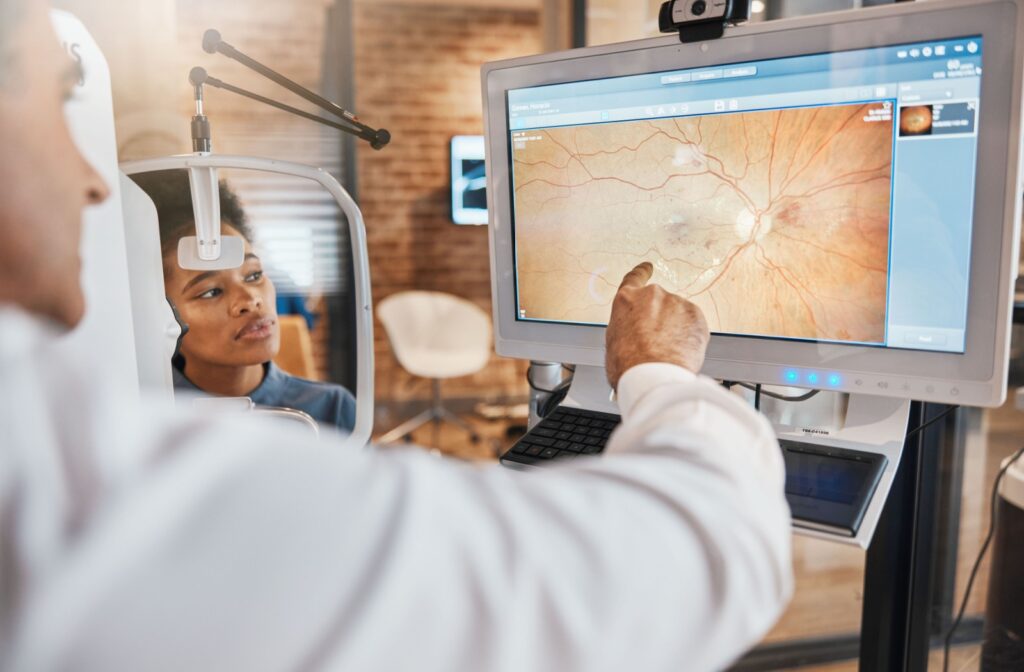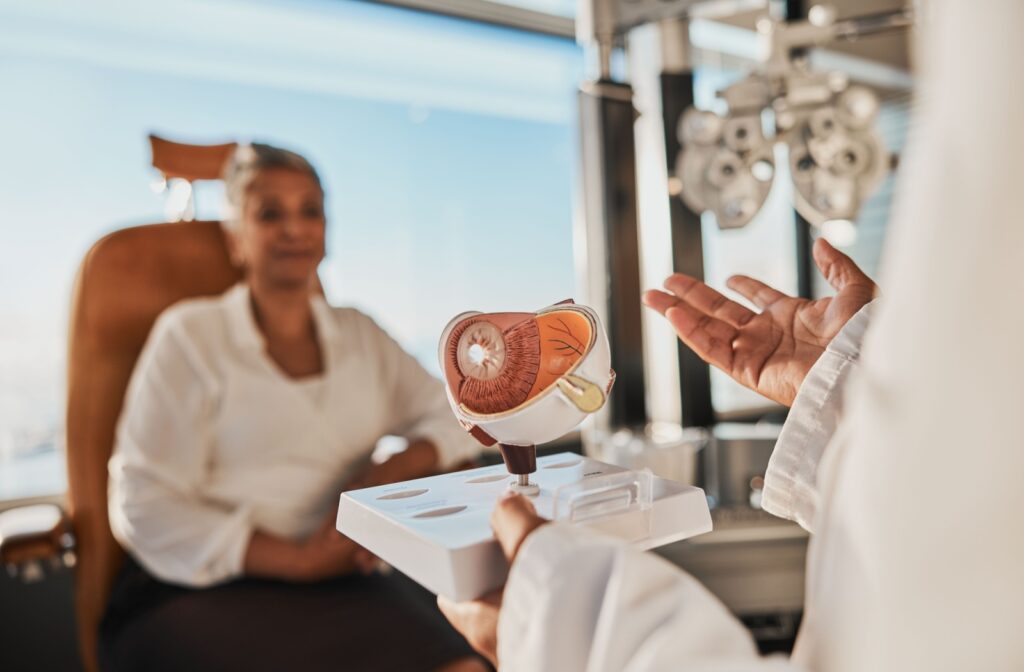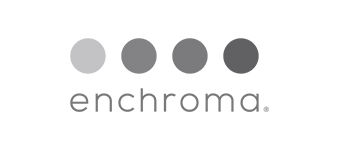Your vision is a valuable sense that requires consistent and proactive care since conditions like glaucoma can threaten your vision if not detected early.
This can be challenging because glaucoma progresses gradually and silently, without causing noticeable issues until significant vision loss has already occurred.
Recognizing these early warning signs of glaucoma can help your eyecare team identify the condition before it progresses:
- Loss of peripheral vision
- Halos around lights
- Eye pain or headaches
- Blurry or distorted vision
- Redness in the eyes
Don’t wait for these warning signs to become severe. If you experience any of these symptoms, schedule an appointment with your eye doctor immediately.
Glaucoma’s Early Signs: Symptoms to Watch For
The eyes are a complex organ. Our ability to see relies on the proper functioning of multiple structures, including the optic nerve.
Our vision relies on seamless communication between the optic nerve and the brain, which work together to interpret the visual world around us. Damage to the optic nerve disrupts this line of communication, causing gaps, or “blind spots” in what we see.
Glaucoma is a group of eye conditions that damages the optic nerve and progresses silently without noticeable symptoms in its early stages.
These warning signs could indicate glaucoma, making it essential to visit your eye doctor immediately to protect your vision.
Loss of Peripheral Vision
One of glaucoma’s earliest and most common signs is gradual peripheral vision loss.
This often starts subtly; you may find it difficult to see objects or movements at the edges of your field of view.
This change can be so gradual that many people don’t notice it until it begins interfering with daily activities.
Halos Around Lights
Seeing fuzzy halos or bright rings around lights — especially at night — can be a sign of increased eye pressure, known as intraocular pressure (IOP), which is a key factor in glaucoma.
When eye pressure rises above normal levels, it can slowly damage the optic nerve — the part of your eye that carries images to your brain. This kind of damage often happens without any pain or obvious symptoms, gradually reducing your side (peripheral) vision over time.
High eye pressure can also affect how light enters your eye. It may cause the cornea to swell slightly, which bends light differently and creates those glowing halos. Some people also notice increased sensitivity to glare, making nighttime driving or bright lights more uncomfortable.
While halos can also show up due to other conditions like cataracts or astigmatism, it’s important not to dismiss them as just eye strain or fatigue. If you’re noticing them regularly, it’s worth getting your eyes checked.

Eye Pain or Headaches
While many types of glaucoma don’t cause discomfort, acute angle-closure glaucoma does.
This form of glaucoma can develop quickly and cause sharp eye pain, headaches, and nausea. These sudden and severe symptoms should be immediately assessed as open-angle glaucoma is considered a medical emergency that permanently damages vision within hours.
If you feel ongoing discomfort in or behind your eyes, don’t dismiss it. Pain isn’t normal and warrants a visit to your eye doctor.
Blurry or Distorted Vision
If your vision suddenly feels blurry, distorted, or harder to focus, it could be a sign of increased eye pressure — one of the key risk factors for glaucoma.
You might notice trouble reading, focusing on objects, or that your vision seems to change throughout the day. While blurry vision has many possible causes, it becomes more concerning when it appears alongside other signs, like halos around lights or loss of side vision.
If these symptoms show up together, it’s a good idea to have your eyes checked.
Redness in the Eyes
Chronic eye redness can sometimes be a telltale sign of glaucoma, especially if accompanied by discomfort or vision issues.
Redness in the eyes can develop from elevated IOP, which can irritate and inflame the eye’s delicate blood vessels, leading to persistent redness.
Sometimes, red eyes may seem harmless or be attributed to minor underlying causes like allergies or dry eyes. However, if consistent or severe redness doesn’t appear to improve it’s strongly advised to visit your eye doctor for a health assessment.
In the meantime, avoid rubbing your eyes and use artificial tears to relieve discomfort, but these measures aren’t a substitute for medical care.
How Eye Exams Detect These Early Signs
The tricky thing about glaucoma is that its early symptoms are subtle or mimicked by other conditions, making regular comprehensive eye exams critical for detection.
Your eye doctor uses several tools and techniques to identify signs of glaucoma, helping to catch the condition in its earliest stages for proper management to prevent further vision loss.
During a comprehensive eye exam, you may undergo the following tests:
- Tonometry: This measures your IOP, since elevated pressure is a key risk factor for glaucoma.
- Visual field test: This test checks for blind spots in your peripheral vision and is excellent for spotting changes caused by glaucoma.
- Optic nerve imaging: Retinal imaging tools allow your doctor to assess the health of your optic nerve for any signs of damage or abnormalities.
- Gonioscopy: This test evaluates the drainage angle in your eye to determine the type of glaucoma you may have.
Most adults can get by with an annual routine eye exam, but those at higher risk for developing glaucoma may be encouraged to visit their eye doctor more frequently.
Some of these risk factors for glaucoma include:
- Age: People over the age of 60 are at a higher risk for developing glaucoma.
- Family history: Glaucoma often runs in families, making it important for those with a family history to stay vigilant.
- Certain medical conditions: Diabetes, high blood pressure, and thin corneas can increase the risk.
- High eye pressure: Elevated IOP is one of the main risk factors for glaucoma.
- Previous eye injuries: Trauma to the eye can lead to the development of glaucoma later in life.
Take Control of Your Eye Health
One of the most effective ways to protect your vision is by staying proactive about your eye health. And, when it comes to glaucoma, early detection is key.
Contact our team at Warman Eyecare to schedule a visit for your routine eye exam.









